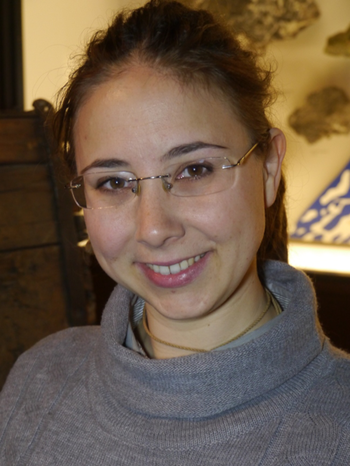Dr. Chiara Schoch

Landscape Archaeology and Architecture (LAA)
Ancient Near Eastern Archaeology
12/2012 – 2018
Promotion im strukturierten Promotionsprogramm LAA der BerGSAS, finanziert durch ein Stipendium des Exzellenzclusters Topoi
05/2010 – 11/2012
Wissenschaftliche Mitarbeiterin am Deutschen Bergbaumuseum, Bochum,
Projekt: "Früher Bergbau und Metallurgie Anatoliens"
10/2002 – 04/2010
Studium Vorderasiatische Archäologie, Prähistorische Archäologie und Altorientalistik an der Freien Universität Berlin
Wool in Western Asia
The project focused regionally on Western Asia with a chronological timeframe from the 7th millennium through 3rd millennium BCE. Its objective was to find direct and indirect evidence for the introduction of wool as a textile fiber and study the procuring and processing of textile raw materials. The two main strands of evidence for this dissertation thesis were published textile traces and spindle whorl data collected from 23 sites. The project was designed to identify patterns of change related to textile production on a large regional and chronological scale.
In order to functionally analyze the spindle whorls, special care was taken to obtain the measurements for height, diameter and especially the weight of the objects. The data was acquired from published literature, if available. Additional data was collected in Museum archives (for the finds from Alishar Hüyük and Chogha Mish: the Oriental Institute, Chicago; the spindle whorls from Tepe Gawra: PennMuseum Philadelphia) and University collections (finds from Farukhabad, Sharafabad: University of Michigan, Ann Arbor; spindle whorls from Tell Arpachiyah: University College, London). The work includes a thorough study of the characteristics of spindle whorls, statistical analysis of their dimensions especially their weight and a guide to practical spinning. The praxis of spinning is detailed and analyzed in reference to ethnographic and experimental studies. An important step in the analysis was the identification of steps in the chaîne opératoire of textile production that are related to the used raw material and to establish methods to exactly study these specific steps. As a result spinning as a step in the textile production process gained in significance for our research question.
The published textile traces were studied with a focus on spinning technique and whether true weaving was applied in the creation of textiles. The correlation of the development of textile technique and the patterns of spindle whorls enabled us to identify two major steps in the intensification of textile production. The first, being the introduction of mechanized true weaving, by which cloth production reaches a hitherto unknown speed. Since spinning is the bottleneck in the textile chaîne opératoire the new speed of true weaving makes an intensified production of spun yarn necessary. The second identified step is the transition from the use of plied yarns to single yarn in woven textiles. The use of single yarns as warp and weft in woven textiles at least doubles and maybe triples the efficiency by using less time for spinning. In this transition we assume that wool played a significant role. The fibers of wool with their scaly surfaces are likely to adhere to each other and make easily useable single yarns. In the textile evidence of the 4th and 3rd millennium BCE a clear preference for single yarns in woolen textiles can be attested. Linen textiles are still numerously worked in plied yarn, but also in this material the use of single yarns is increasing.
Results
The results of this work then can be preliminary summarized as follows: new raw materials influence the technological development significantly. At the outset of the project we made the assumption that a change in raw material would change the physical properties of the used tools. But actually no significant shift is visible in the diagrams. The change that occurs is actually much more subtle, because it is fiber related. It is also much more significant because it has an impact not only on the wool working process but on all the worked fibers.
This dissertation project was successfully completed within the Research Group A-4 The textile revolution of the Excellence Cluster 264 Topoi.
